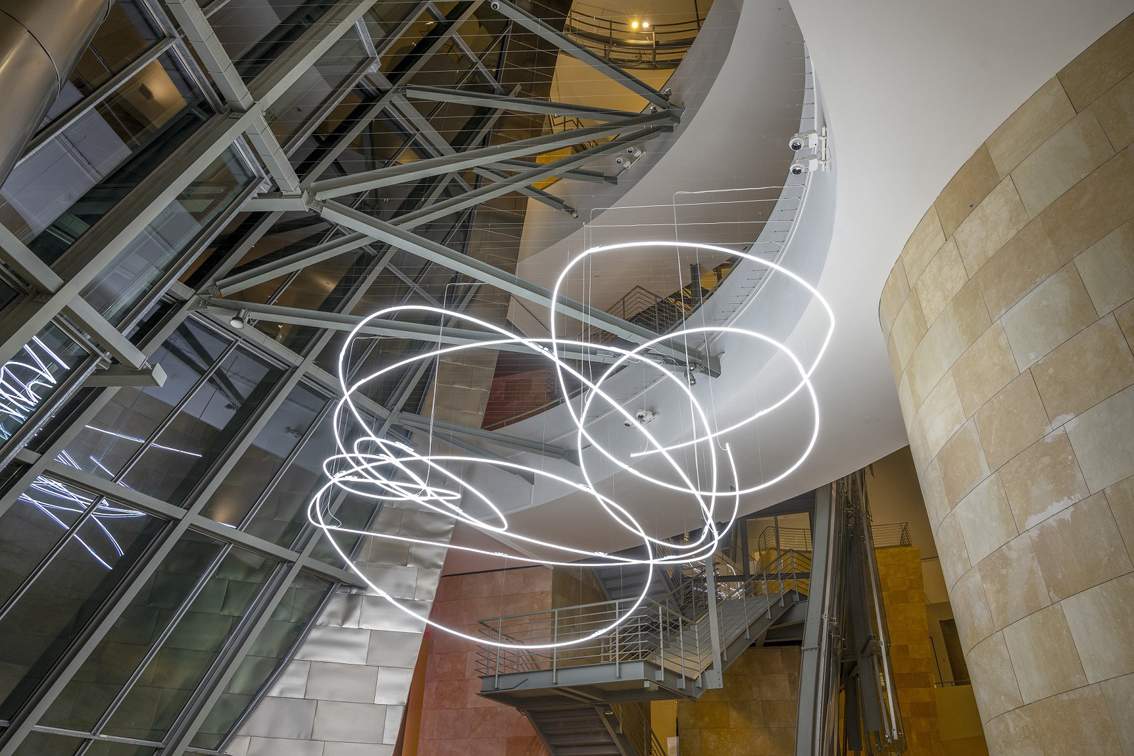An important work by Lucio Fontana (Rosario, 1899 - Comabbio, 1968) has been installed in the atrium of the Guggenheim in Bilbao and will remain there for the next three years. It is a largeneon (Neon Structure for the 9th Milan Triennale), which the Italian-Argentine artist created in 1951: it can be considered at the same time a drawing, a sculpture, a masterpiece of lighting engineering, a sign suspended in the air. A complex work that in 2019 was the focus of the exhibition Lucio Fontana. En el umbral, and which now, the Basque museum points out, “finds an exceptional interlocutor in the building designed by Frank Gehry, whose sketches on paper recall Fontana’s spatial arabesques.”
According to the Guggenheim, the Neon Structure for the 9th Milan Triennale is one of the best examples of the marriage of art and technology in the 20th century, not least because creating such a work was no small technical challenge. For its time, it was a striking work, indebted to some extent to Baroque aesthetics, a work that amazed visitors to the Milan exhibition, who could see it at the entrance to the show: it was one of the first times neon light was used as a material for a work of art. Probably, Guggenheim experts speculate, with his neon Fontana intended to respond to the famous “light drawings” that Pablo Picasso made with photographer Gjon Mili in 1950.
The museum, the Guggenheim continues in a note, considers it a “privilege” to be able to display the work in the atrium, and this is thanks to a collaboration with the Lucio Fontana Foundation in Milan. “The neon created for the 9th Milan Triennale in 1951,” points out Paolo Laurini, president of the Foundation, “can certainly be considered one of Lucio Fontana’s most representative and iconic works, an absolute example of his disruptive creativity.” According to Laurini, the installation of the work in the atrium of the Guggenheim Museum in Bilbao is exceptional because “the artist always had a special relationship with architects, to whom he felt close in his spatial sensitivity. The great spontaneity with which Fontana’s installation in Bilbao dialogues with Frank Gehry’s fascinating architecture, offering stimulating and unprecedented visions and points of view, makes us think that this relationship finds an ideal continuity here.”
Pictured is Fontana’s work in the atrium of the Guggenheim.
 |
| A spectacular neon by Lucio Fontana has been installed in the atrium of the Guggenheim in Bilbao |
Warning: the translation into English of the original Italian article was created using automatic tools. We undertake to review all articles, but we do not guarantee the total absence of inaccuracies in the translation due to the program. You can find the original by clicking on the ITA button. If you find any mistake,please contact us.